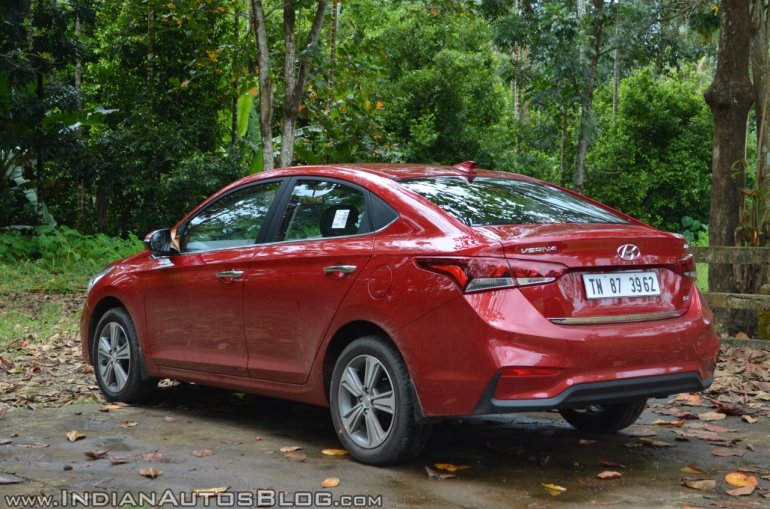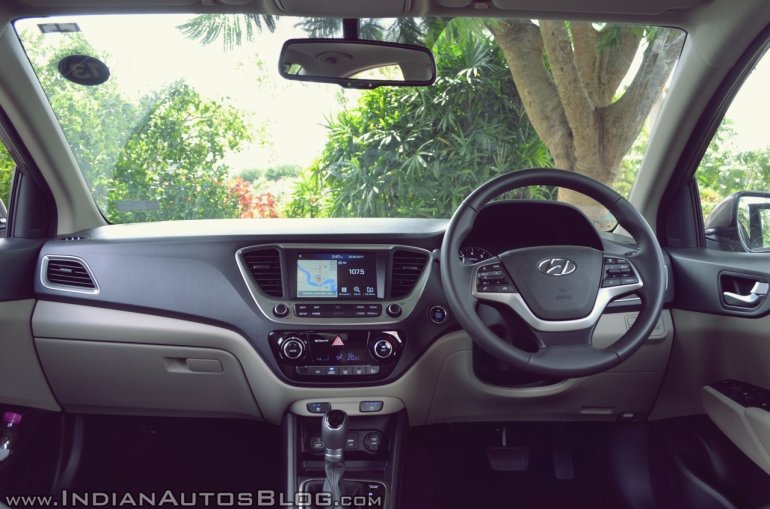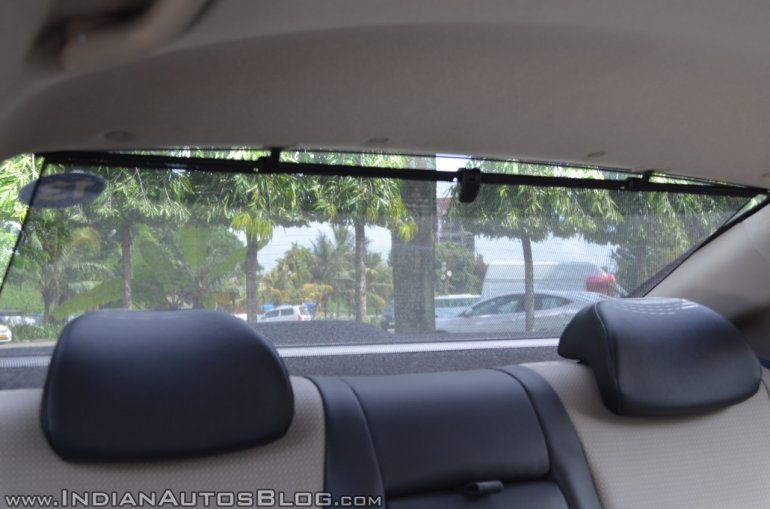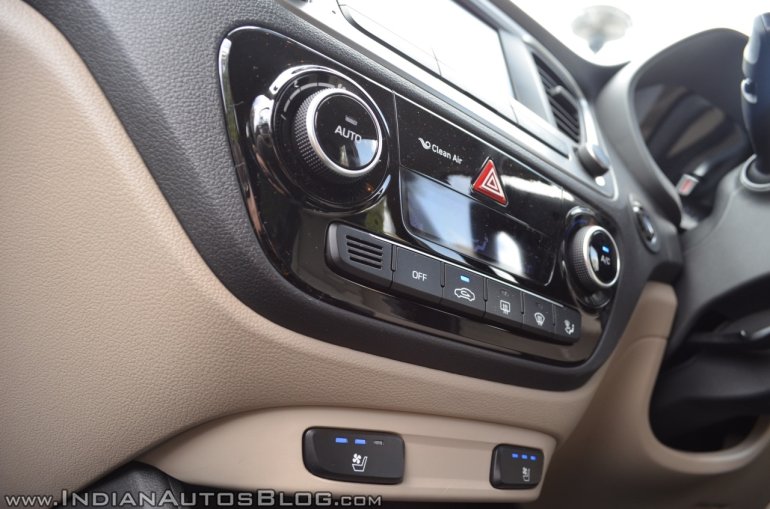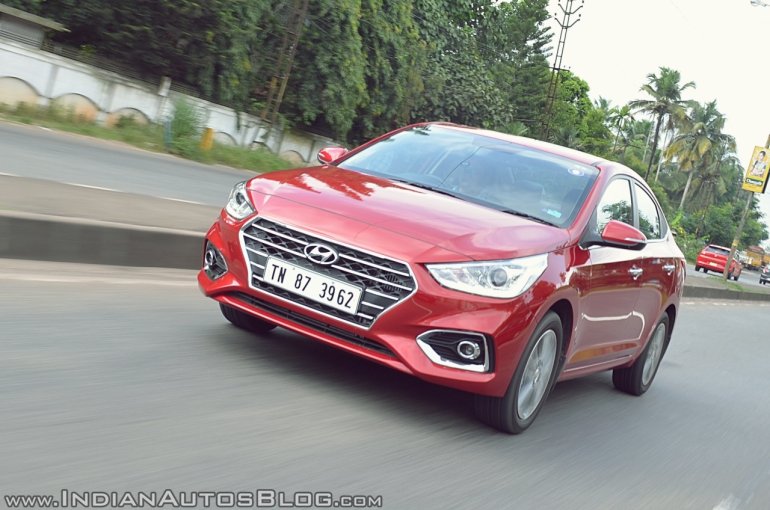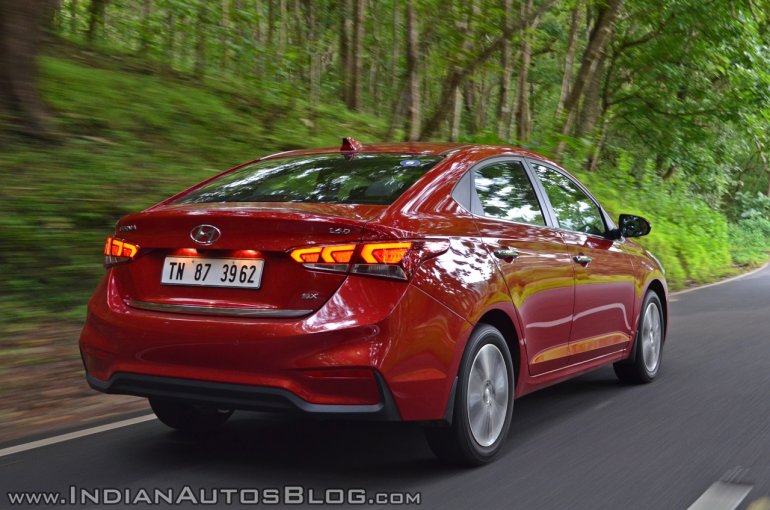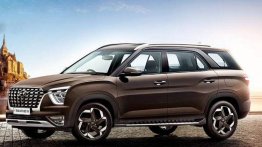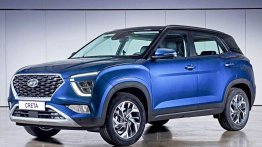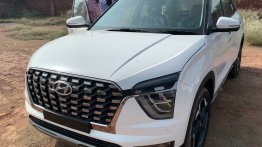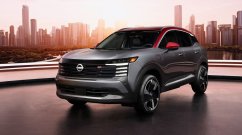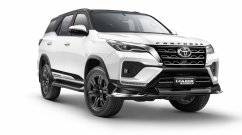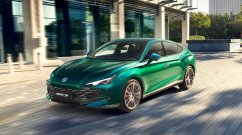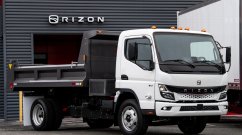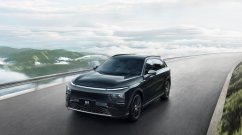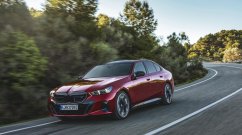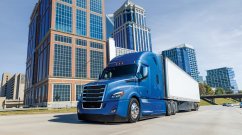What is it?
This is the fifth generation of Hyundai’s C2 segment sedan and their answer to segment favourites Maruti Ciaz and Honda City. Armed with a new platform, added features, the new Verna has its work cut out as Hyundai aims to bring back sedan buyers. When Hyundai launched the fourth gen Fluidic Verna in May of 2011, the sedan went on to successfully dethrone long standing leader Honda City. Six years on, the circumstances have changed. There is a diesel Honda City to contend with and the cheaper, on paper at least, Maruti Ciaz. Nevertheless, Hyundai seems to have a strong product on its hands and I’ll guide you through each aspect in this Hyundai Verna 2017 test drive review.
What does it look like?
The previous generation Verna was a quantum leap over its predecessor in terms of design as it marked the debut of Hyundai’s Fluidic Sculpture design language in India. Now, the new Verna may not be as radically different design wise, but the evolutionary path has given it a new, more mature appearance. The front fascia is adorned by the cascading effect grille, a staple Hyundai design trait, flanked by swooping headlamps that house projector headlamps and LED DRLs. Chrome detailing around the projector fog lamps and their enclosures and on the grille louvers ensures there’s enough to satiate an average Indian car buyer’s appetite for it.
For me, the Verna’s best angles are its side and rear. The sloping roofline flowing smoothly into the sculpted tail gives it a beautiful coupe-like profile. I also quite like the black element towards the bottom of the bumper that helps reduce some of the bulk and adds a touch of sportiness to the overall look. The wing shaped tail lamps get LED detailing giving the Verna a rather upmarket appearance.
What’s it like on the inside?
The Verna’s cabin has an air of elegance. Like its exterior, the dashboard design isn’t radical by any means. However, it is well laid out and scores high on practicality. Every button is where you would expect it to be. In terms of quality, it outshines its rivals quite easily. In this top of the line SX(O) trims, the car gets a black beige interior leatherette seat upholstery, leather wrapped steering wheel and gear knob. For the first time, the Verna is being offered with a sunroof, but only in the SX(O) and SX+ diesel auto trims.
A 7-inch touchscreen unit dominates the centre console, which mercifully, still gets physical buttons and rotary controls for basic functions like volume, track selection et. al. Placed just below that are controls for the automatic climate control, which is accompanied by Verna’s party trick - ventilated seats. The feature is unique not only to Verna’s segment but several segments higher up as well. For me, it’s easily one of the best additions Hyundai has made to the Verna keeping in mind our excruciatingly hot summers.
While the front seats are nice and supportive, buyers looking to enjoy the Verna from the backseat may be a tad disappointed. The sloping roofline has led to the rear bench being placed a slightly lower than what would have been comfortable. The headroom and legroom are just about ample and while it is a definite improvement over the previous car, the backseat just doesn’t feel as spacious or comfortable as its rivals.
The rest of the cabin is a standard affair. You get a multifunction steering wheel with controls for audio, telephone, cruise control and MID. Speaking of which, in typical Hyundai fashion, the centre console with the MID is a rather simple looking unit with a white backlight. No loud colours here, something that may not play out well with Indian tastes which favour flashy.
With the new Verna, Hyundai has also introduced the Auto Link app. This app once hooked up to your car, dishes out all sorts of information including engine speed and RPM, driving characteristics, driving history. It even rates your driving style to help you extract the most mileage out of your car. It might seem a bit nannyish to some, but I think it’s a great tool to keep a check on your chauffeur or anyone that regularly drives your beloved.
What’s Under the Hood?
There are two engine options to choose from – 1.6 L Gamma Dual VTVT petrol and 1.6 L U2 CRDi diesel. Each engine is available with either a 6-speed manual or a 6-speed automatic transmission taking the total number of engine and transmission configurations to four. There are no 1.4's on offer this time around. We got a chance to sample the diesel manual and petrol automatic variants.
The 1.6 diesel has been carried over from the previous model and is the same that powers the Creta and Elantra. It has a peak power output of 128 PS and a maximum torque of 265 Nm making it the most powerful car in its segment. Refinement levels are high and the engine only gets noisy when revved hard. There’s obvious turbo lag but gets dealt with post 2,000 RPM beyond which the car gathers steam effortlessly. Hyundai has worked to make the power band wider and flatter so, now you get a power spread between 1,500-3,000 rpm. Pulling overtakes out on highways is a breeze thanks to oodles of grunt on offer. Couple that with a six-speed manual and you get a car that can do spirited and relaxed with equal aplomb.
I thought the refinement levels of the diesel were commendable, but the petrol variant just blew me away. The engine is barely audible even at speeds and only gets loud when you mash the throttle. Paired with a 6-speed auto, the petrol Verna is more at home when driven with a relatively lighter foot. When driven hard, the transmission seems a bit confused with its upshifts and downshifts points. A sport mode could have sorted that out, but Hyundai does not have that planned.
What’s it like to drive?
The constant improvement Hyundai has made in the dynamics department across its range is clearly evident in case of the Verna as well. Its stiffer chassis, the same one that underpins the Elantra, has made the Verna more agile. The car now rides with more confidence and I definitely felt much more at ease chucking it into corners as compared to its predecessor. The ride quality leans slightly towards firm, but potholes result in a soft thud rather than a harsh jolt. Despite the firmness of the suspension setup, things rarely get uncomfortable for occupants. The Verna no longer wallows over bumps at high speeds and pitch and roll also stay within reasonable limits.
The steering wheel has ample lightness at city speeds and weighs up sufficiently at high speeds. However, it doesn’t have much to offer in feedback, but then again, modern EPS units rarely do. Hyundai claims to have reworked the braking as well. The Verna now has a more progressive feel to the brakes and maintains composure even under heavy braking. However, it no longer gets discs on all four ends.
Should you buy one?
The new Hyundai Vera isn't without flaws. Despite the increment in rear seat space over the previous model, the rear bench still isn’t as spacious as its rivals and this could very well turn out to be its Achilles heel. And, for some odd reason, Hyundai is not offering the diesel auto in the top of the line SX(O) trim so, you miss out on six airbags, ventilated seats, etc. That said, If you’re looking for something that will primarily be self-driven, then the new Hyundai Verna 2017 is just the car for you. The diesel is the most powerful in its segment, while the petrol variants outscore major rivals in power output.
Hyundai is also offering buyers the convenience of an automatic transmission right from the mid level EX trims. The dynamics of the new Verna have witnessed a marked improvement. While it may not still be the most fun to drive, it does let you indulge in a spot of spirited driving. Add to that, a long list of features including nifty additions like ventilated front seats and you get an overall package that knocks hard on the doors of the segment leaders.
Hyundai Verna 2017 Test Drive Review - Specifications
| Specification | 2017 Hyundai Verna Petrol | 2017 Hyundai Verna Diesel |
| Engine | 1,591 cc Gamma Dual VTVT | 1,582 cc U2 CRDi |
| Power | 123 PS | 128 PS |
| Torque | 15.4 kgm | 26.5 kgm |
| Transmission | 6-speed MT/6-speed AT | 6-speed MT/6-speed AT |
| Mileage | 17.70 km/l (MT)
15.92 km/l (AT) |
24.75 km/l (MT)
21.02 km/l (AT) |
Hyundai Verna 2017 Price List
| Hyundai Verna Variant | Ex-showroom Delhi Price |
| Hyundai Verna 1.6 Petrol E Manual | INR 799,900 |
| Hyundai Verna 1.6 Petrol EX Manual | INR 906,900 |
| Hyundai Verna 1.6 Petrol EX Automatic | INR 1,022,900 |
| Hyundai Verna 1.6 Petrol SX Manual | INR 949,900 |
| Hyundai Verna 1.6 Petrol SX(O) Manual | INR 1,108,900 |
| Hyundai Verna 1.6 Petrol SX(O) Automatic | INR 1,223,900 |
| Hyundai Verna 1.6 Diesel E Manual | INR 919,900 |
| Hyundai Verna 1.6 Diesel EX Manual | INR 999,900 |
| Hyundai Verna 1.6 Diesel EX Automatic | INR 1,139,900 |
| Hyundai Verna 1.6 Diesel SX Manual | INR 1,111,900 |
| Hyundai Verna 1.6 Diesel SX+ Automatic | INR 1,261,900 |
| Hyundai Verna 1.6 Diesel SX(O) Manual | INR 1,239,900 |


